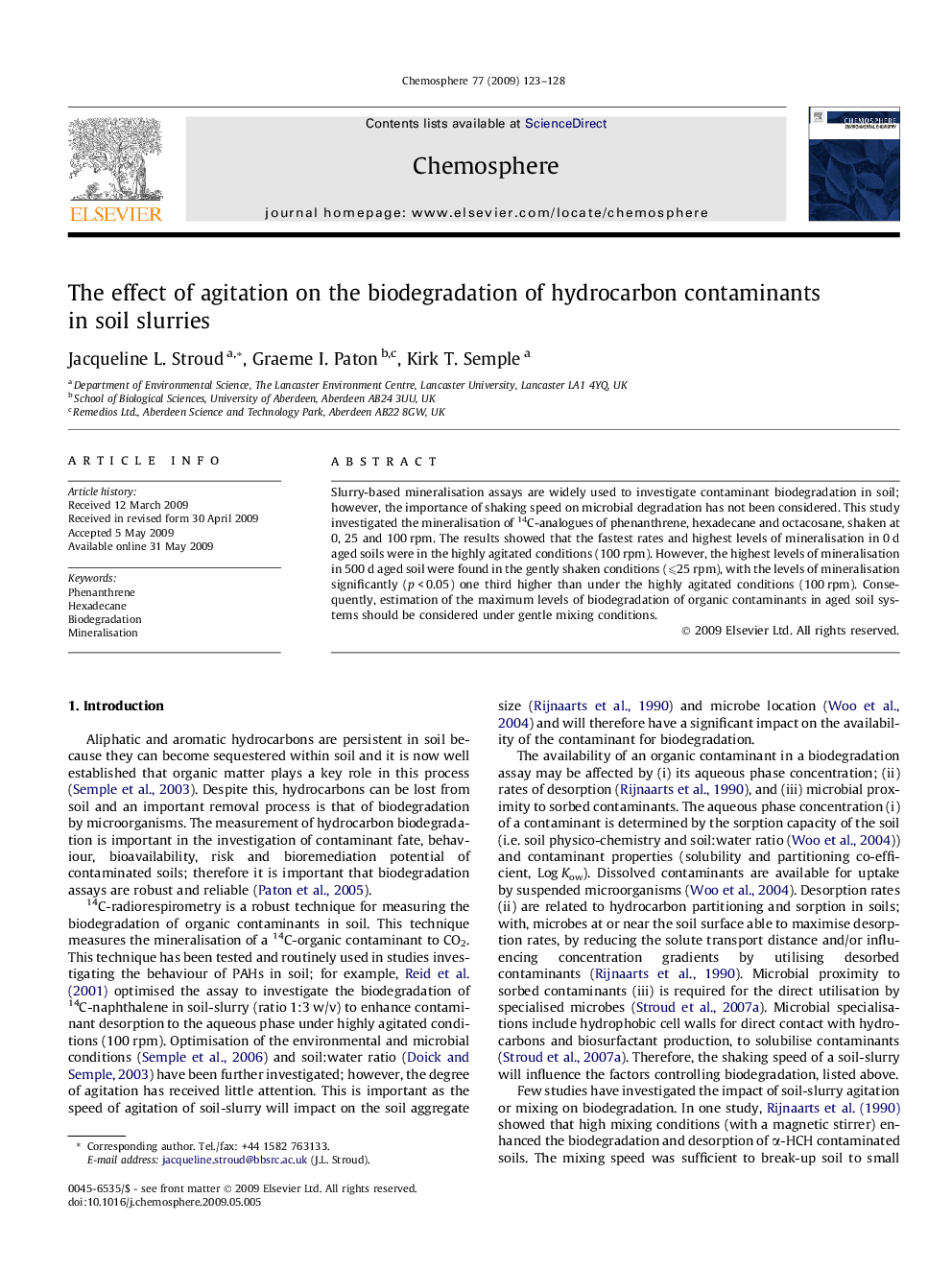| Article ID | Journal | Published Year | Pages | File Type |
|---|---|---|---|---|
| 4412509 | Chemosphere | 2009 | 6 Pages |
Slurry-based mineralisation assays are widely used to investigate contaminant biodegradation in soil; however, the importance of shaking speed on microbial degradation has not been considered. This study investigated the mineralisation of 14C-analogues of phenanthrene, hexadecane and octacosane, shaken at 0, 25 and 100 rpm. The results showed that the fastest rates and highest levels of mineralisation in 0 d aged soils were in the highly agitated conditions (100 rpm). However, the highest levels of mineralisation in 500 d aged soil were found in the gently shaken conditions (⩽25 rpm), with the levels of mineralisation significantly (p < 0.05) one third higher than under the highly agitated conditions (100 rpm). Consequently, estimation of the maximum levels of biodegradation of organic contaminants in aged soil systems should be considered under gentle mixing conditions.
